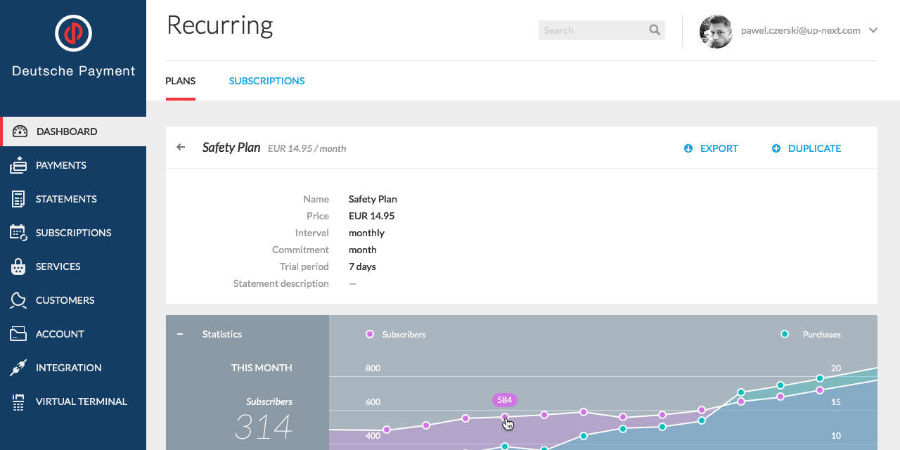Meandering through the startup years
- Service design
- Product design
- Machine learning
- Prototyping
A controlled exit into uncontrolled terrain
After leaving Roche, where I led a front-end team and built a UX function across multiple product lines, I joined Filmaster as a co-founder at a turning point. The startup had just secured funding from a German accelerator and was pivoting from a consumer movie recommendation site into an enterprise technology provider.
Our focus shifted to building a proprietary machine learning engine and delivering data-driven personalization tools for cinema chains, VoD and streaming platforms, cable providers, and broadcasters.
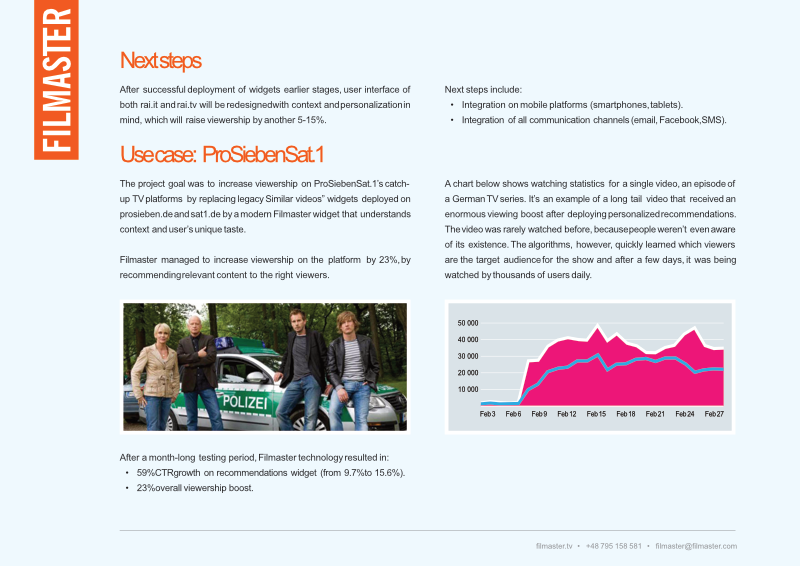
Data analysis slide in executive deck following a pilot deployment on ProSiebenSat.1's catch-up TV platforms
This phase overlapped with the launch of Front-Trends—a conference I originated, organized, and designed for nearly a decade. That parallel effort shaped much of my thinking about product, brand, and community, though its full design arc belongs to a separate story.
The core business
At Filmaster, my official title was Chief Product Officer, but the scope extended far beyond traditional boundaries. Responsibilities included service and product design for both client-initiated services and proprietary platforms, preparation of investor and sales materials, and direct communication with investors and clients.
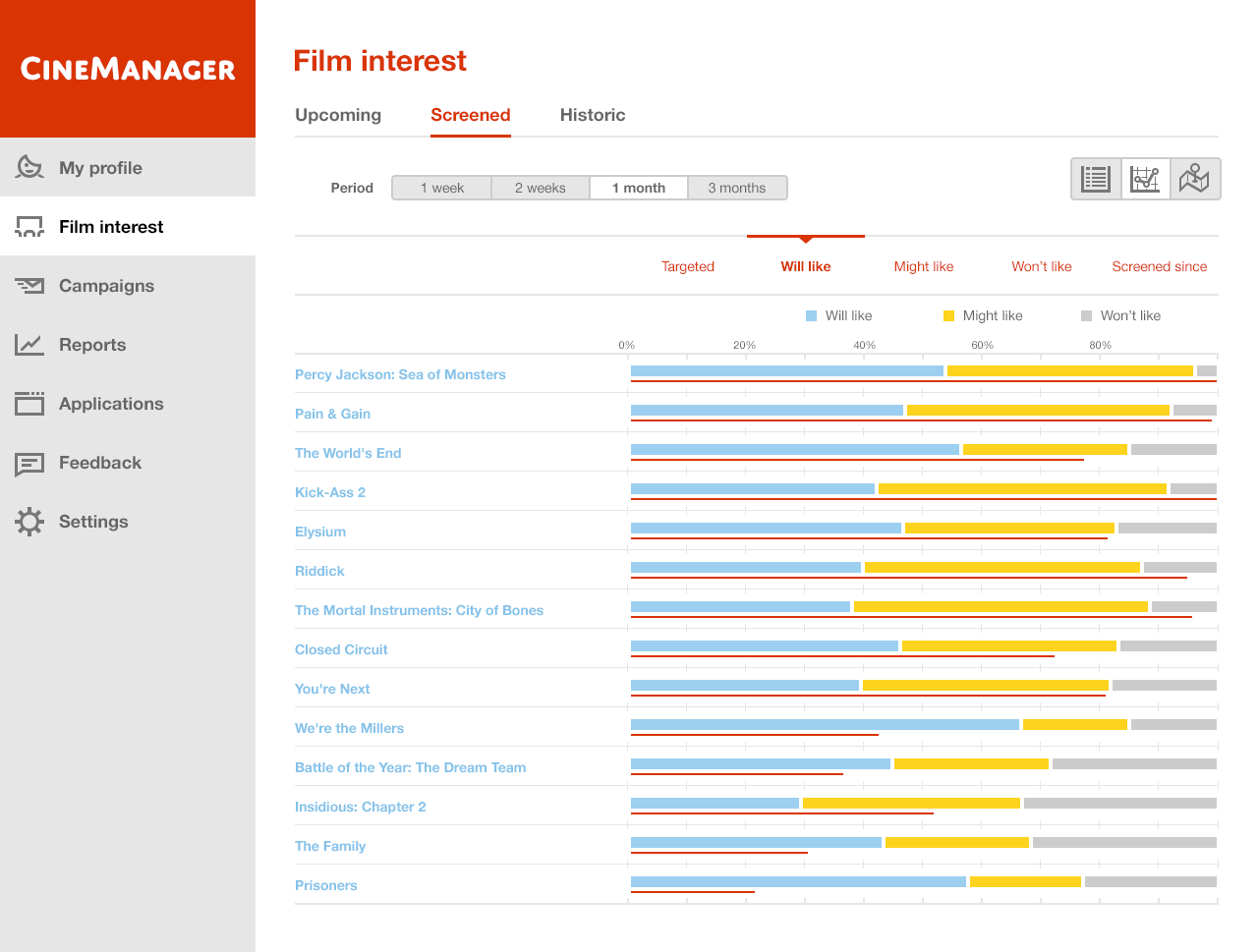
cineManager, SaaS for cinema chains and streaming platforms to manage film screenings, ad targeting and client retention
cineManager provided a concrete example of the work involved. The platform optimized screening schedules and targeted potential audiences to maximize ticket sales and improve conversion rates. For VoD and streaming services, it provided recommendation engines and sophisticated ad targeting. I led the interface design and collaborated with clients to ensure the product addressed real operational needs.
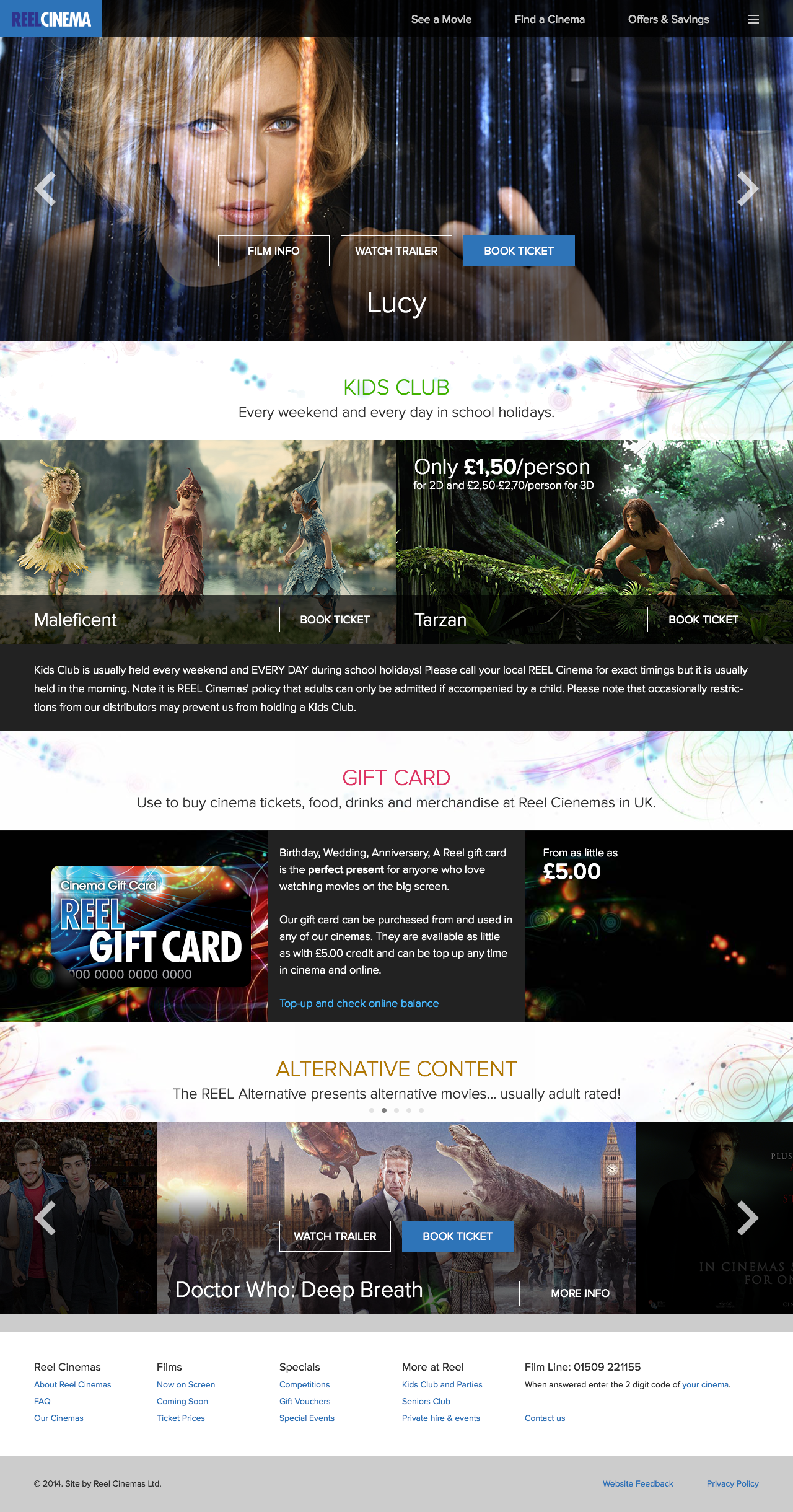
Reel Cinema website – Home page
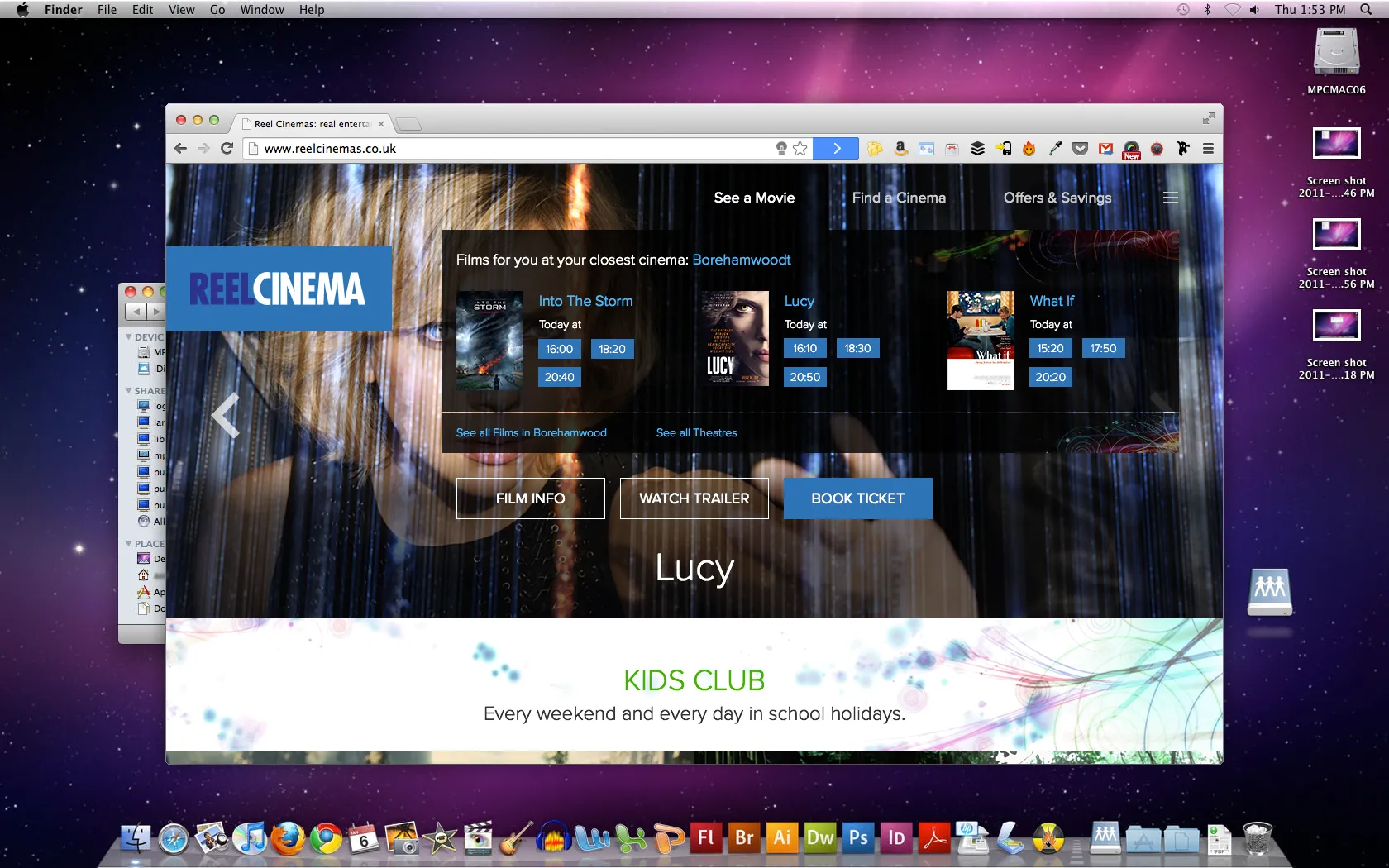
Reel Cinema website

Reel Cinema website
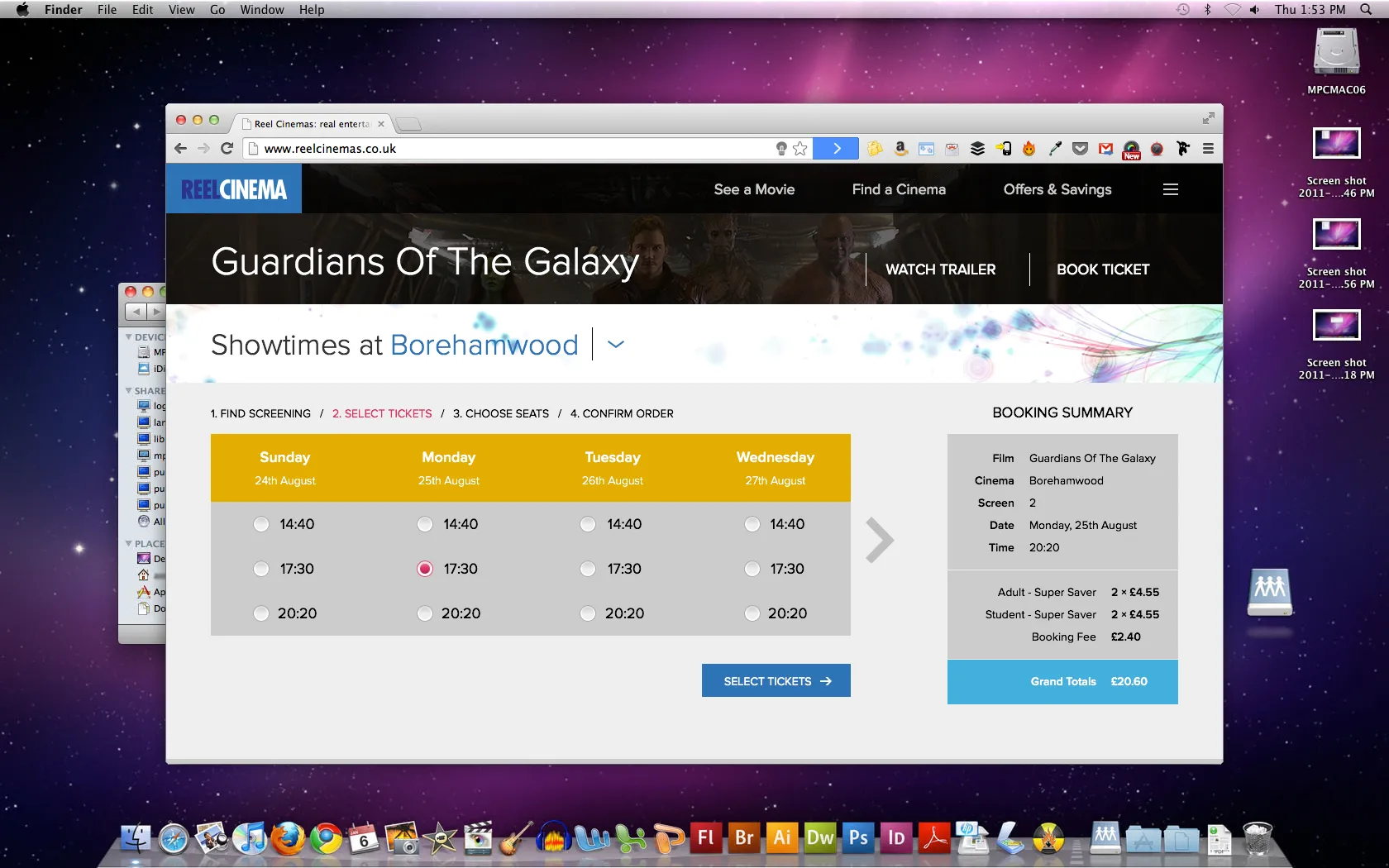
Reel Cinema website
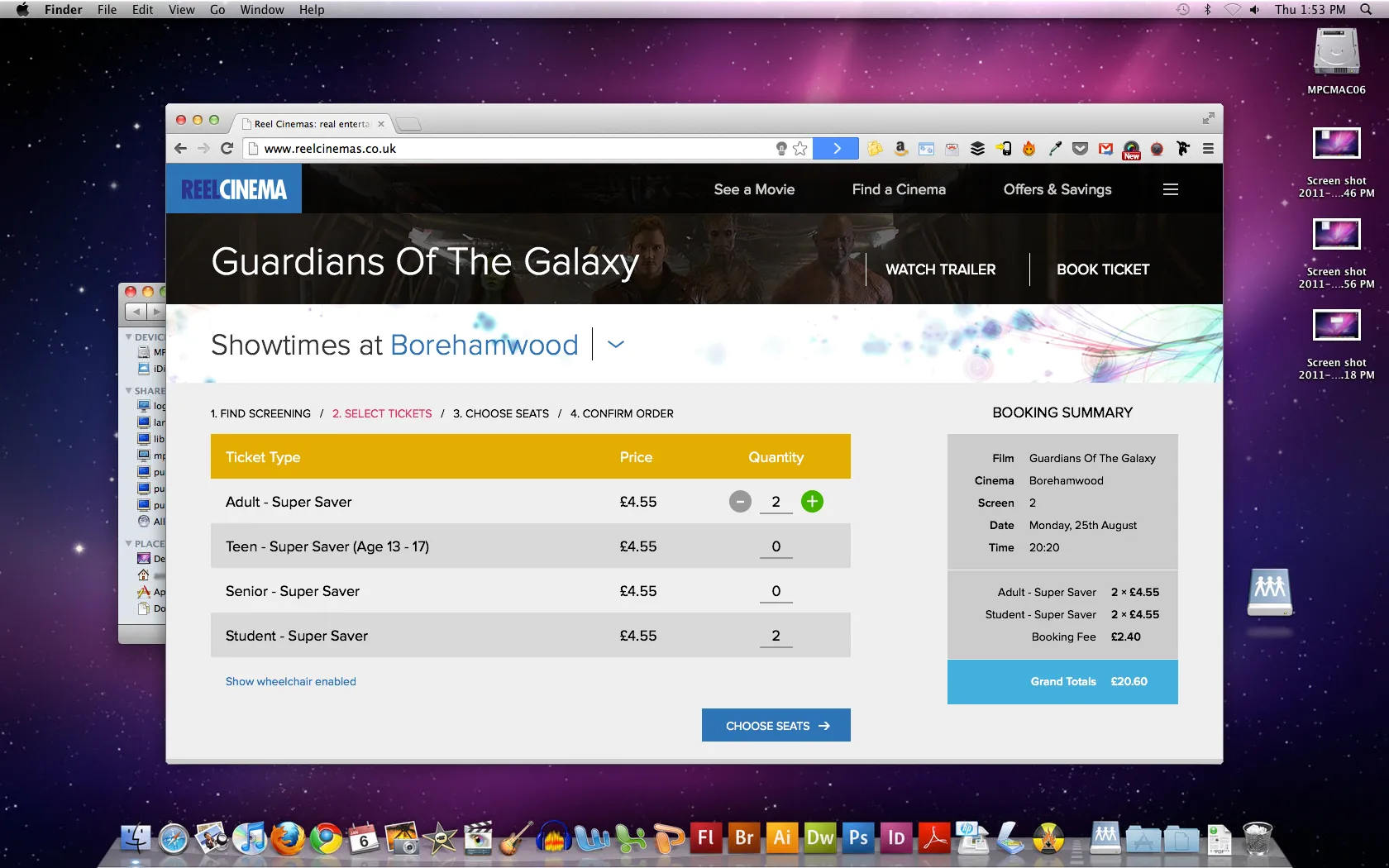
Reel Cinema website
A by-product
I also developed various prototypes and demo applications. These ranged from branded user interfaces to technical proofs built for pilot programs and investor presentations. Each needed to be both functional and polished: working software that demonstrated the concept while operating within realistic constraints such as limited data sets, response time requirements, or the expectations of mixed technical and non-technical audiences.
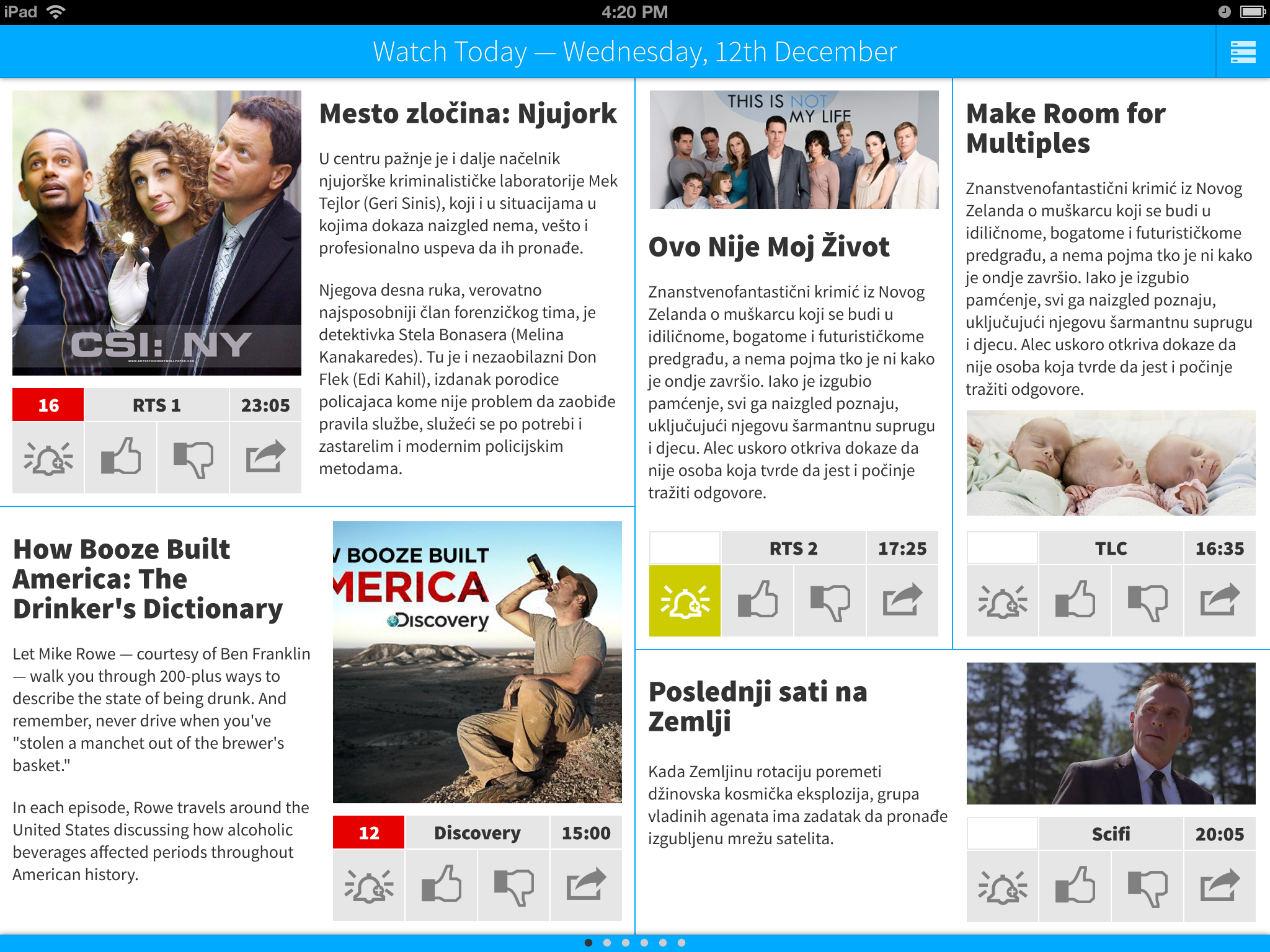
Second screen TV companion app
Industry events played a key role in Filmaster’s visibility and growth. We took part in startup showcases at the Cannes Film Festival, where early exposure led to conversations with future clients. At SXSW, we set up a booth and spent several days presenting our work to a diverse range of media professionals, including potential partners and acquisition leads.

Google TV movie guide, variant 1
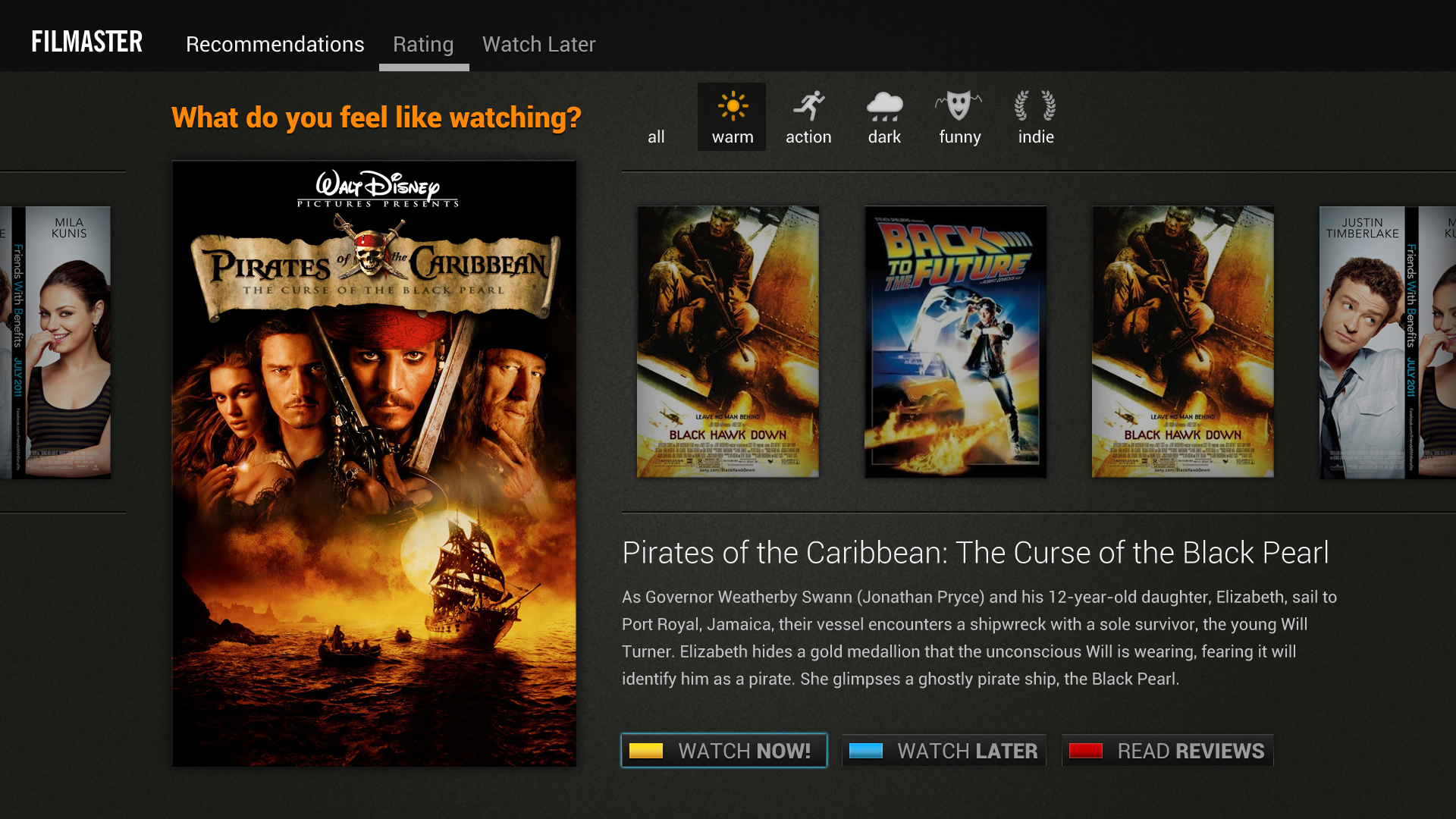
Google TV movie guide, variant 2

Kiosk iPad app made for Filmaster booth at SXSW 2012
Two tech-demo products were created specifically for the event: a first-screen Google TV app and a kiosk-style iPad application. Preparation for SXSW extended beyond software—furnishing the booth meant hauling tables and couches, sourcing a popcorn machine, and improvising promotional props, including a mannequin leg in reference to a then-popular meme.
Work and fun at Reaktor
The startup years weren’t defined solely by client work or product demos. Filmaster shared a space with other early-stage companies in a rented villa in Warsaw’s Żoliborz district, informally known as Reaktor. It became both an office and a gathering point for the local startup community. We hosted regular meetups, talks, and workshops.
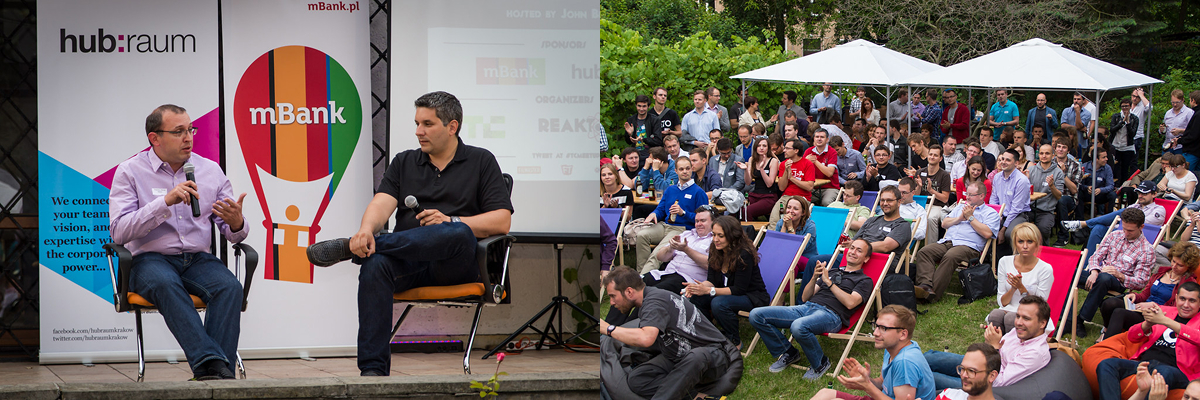
TechCrunch Meetup Warsaw at Reaktor
My role often included handling the technical logistics like lighting, sound, filming, and photo coverage, ensuring the events ran smoothly and left a record. I also contributed as a mentor during early-stage startup consulting, sharing what we had learned so far, while still figuring things out ourselves.
The journey ended with Filmaster’s acquisition by Samba TV, a US-based company in the video advertising space.


